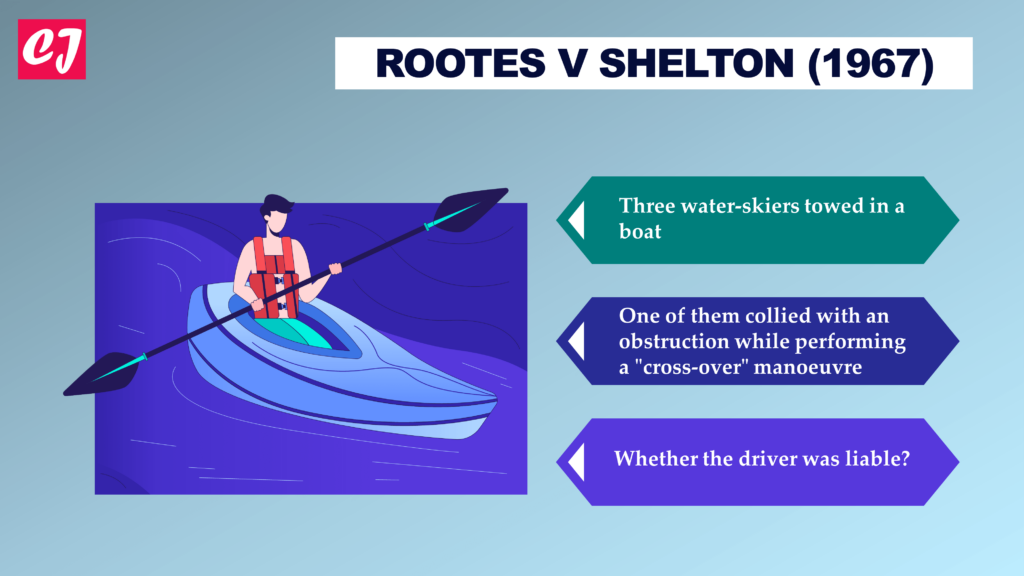
Australian Safeway Stores v Zaluzna (1987): Case Summary
Case name & citation: Australian Safeway Stores Pty Ltd v Zaluzna [1987] HCA 7; (1987) 162 CLR 479
- The concerned Court: High Court of Australia
- Decided on: 10 March 1987
- The bench of judges: Mason, Wilson, Brennan, Deane and Dawson JJ.
- Area of law: Negligence; Duty of care, Foreseeability of risk; Liability of occupiers
This case is a famous case from Australia concerning issues of negligence and occupiers’ liability. It dealt with the question of whether a retailer may be held liable for damages if a customer is injured on his premises.
Case facts (Australian Safeway Stores v Zaluzna)
The plaintiff (Zaluzna) visited a supermarket (Safeway Stores) with the intention of buying some cheese. It was raining that day and as a result, the entrance of the shop had become wet and slippery. She slipped on the wet floor and sustained injuries.
Zaluzna brought legal action against the supermarket, alleging negligence on their part.
Issue
Did the supermarket owe a duty of care to persons entering the premises?
Judgment of the Court in Australian Safeway Stores Pty Ltd v Zaluzna
The Court concluded that Safeway Stores owed a duty of care to Zaluzna.
When businesses expect customers to come onto their premises or store and make purchases, the least that they can provide to them is a safe environment. They should exercise reasonable care to ensure the safety of invitees.
The Court’s decision emphasized that an occupier owes a general duty of care to ensure the safety of anyone who enters their premises, regardless of the person’s classification as an invitee, trespasser, or licensee. Based on the ordinary principles of negligence, the occupier is required to exercise reasonable care to prevent foreseeable harm to others.
Significance
It might be interesting to observe that occupiers’ liability used to be very complex and has evolved over time. The standard of care required of occupiers varied depending on the type of ‘visitor’ to the property. For example, the standard of care where trespassers or unlawful entrants were injured was not as demanding as the standard of care required for injury sustained by invitees or individuals invited onto the property. Special and complex rules of occupiers’ liability existed.
However, in Australian Safeway Stores Pty Ltd v Zaluzna (1987), the High Court made a significant legal decision. Instead of applying different standards of care to different classes of visitors, it was decided that ordinary principles of negligence should be imposed in occupiers’ liability cases. Even before this case, the High Court had, in a number of cases, shown an inclination towards incorporating the ordinary principles of negligence and replacing the old occupiers’ liability rules.
While giving its judgment in the Zaluzna case, the Court approved the statement of Deane J. in Hackshaw v Shaw (1984) 155 CLR 614:
“………, it is not necessary, in an action in negligence against an occupier, to go through the procedure of considering whether either one or other or both of a special duty qua occupier and an ordinary duty of care was owed.
All that is necessary is to determine whether, in all the relevant circumstances including the fact of the defendant’s occupation of premises and the manner of the plaintiff’s entry upon them, the defendant owed a duty of care under the ordinary principles of negligence to the plaintiff. A prerequisite of any such duty is that there be the necessary degree of proximity of relationship.
The touchstone of its existence is that there be reasonable foreseeability of a real risk of injury to the visitor or to the class of person of which the visitor is a member. The measure of the discharge of the duty is what a reasonable man would, in the circumstances, do by way of response to the foreseeable risk.”
List of references:
- http://classic.austlii.edu.au/au/journals/LegIssBus/2002/4.pdf
- https://www.alrc.gov.au/wp-content/uploads/2019/08/alrc42.pdf
- https://fpbl.com.au/fpbl2022/cases/Aus%20safeway%20stores.htm
- https://s3.studentvip.com.au/notes/26548-sample.pdf
- https://legalhelpdesklawyers.com.au/2015/03/10/australian-safeway-stores-pty-ltd-v-zaluzna-1987-hca-7-3-october-1987/
You might also like:
More from tort law:

